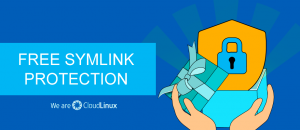
This is because we are pointing to the rad_folder when we go into the awesome_link symlink. If you go into that link: cd ~ /Desktop/awesome_linkĪnd list out the contents in our shortcut we will see a file called cool.txt. In order to create a symlink that points to our rad_folder, we could do that with the following command: ln -s ~ /Desktop/rad_folder ~ /Desktop/awesome_linkĪfter running that command we will have a new symlink (shortcut) called awesome_link on our Desktop. Say that we have a folder on our Desktop called rad_folder and inside that folder is a file called cool.txt. To create a symbolic link you use the following command: ln - s target_path link_path

They may sound a little complex, but they're really not, you can think of symlinks as shortcuts. It is a file that points to another file. If you would like these users to have access to both the symlink and the items it references, you’ll need to move the referenced item inside the shared folder.A symlink or a Symbolic Link is simply enough a shortcut to another file. Users with access to the shared folder may no longer have access to the content referenced by these symlinks-they will only be able to see the symlink file. Any changes made to items in the original location the symlink referenced will no longer sync to your Dropbox account. Why do I have a folder named “Shared Symlink Backups”?Īny items that were synced to your Dropbox account via a symlink that was within a shared folder and that linked outside of a shared Dropbox folder prior to mid-2019 can be found in a new folder named " Shared Symlink Backups". If you still want to sync the original item, we recommend adding that item to your Dropbox account instead of the symlink.īy default, this folder will be unchecked in your selective sync preferences. Why does my folder say “Symlink Backup Copy”?Īny items that were synced to your Dropbox account via a symlink that linked outside of your Dropbox folder prior to mid-2019 can be found in a copy of the folder appended with (Symlink Backup Copy). For this reason, aliases and shortcuts shared on Dropbox may not open on devices with unmatched paths. They can also be called junctions, or networked folders, depending on your operating system and how it references a file or directory.Īliases (Mac) and shortcuts (Windows) are like labels that point to a file, while symlinks are like clones of the file that, in most cases, behave as if they are the original. There are different types of reference links with somewhat different functions. FAQs about Symlinks in Dropboxĭo aliases, shortcuts, and symlinks all work on Dropbox? You’ll see a red-X icon on any such junction point or symlink, indicating the item isn’t syncing. The Dropbox desktop app doesn’t support syncing either of these.

Note: If you move the original file or folder to a different location within your Dropbox account, the symlink will still point to the original location and may no longer work as intended.

On computers running macOS or Linux, the path of the file or folder the symlink points to can be synced to Dropbox. View your operating system below to see if Dropbox allows syncing symlinks. When you create a symlink, it points to the location of the target file or directory, effectively creating a shortcut to it. Symlinks (symbolic links) are a type of file that act as a reference to another file or directory in a file system.


 0 kommentar(er)
0 kommentar(er)
